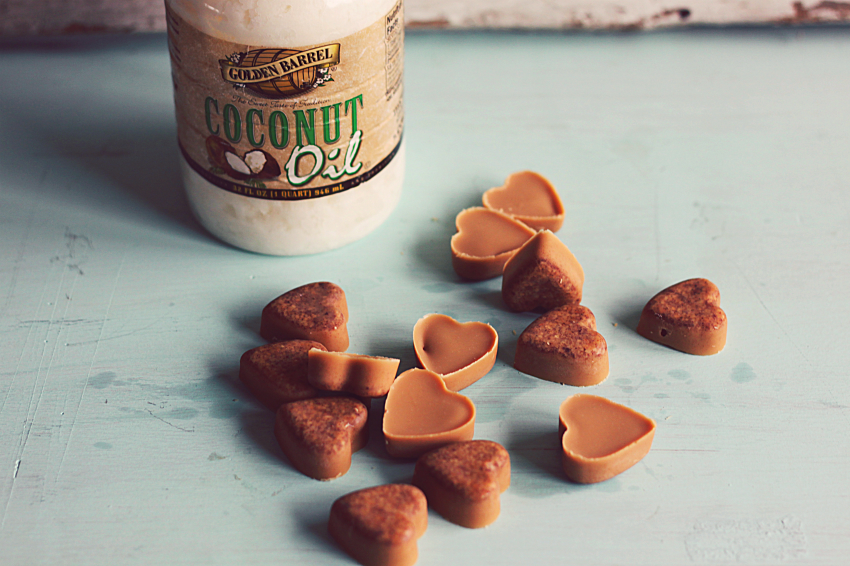Can you microwave coconut oil?
When it comes to liquefying coconut oil, many wonder if the convenience of a microwave can be utilized. Technically, you can microwave coconut oil, but it’s important to do so with caution. Coconut oil only needs to reach a warm 76°F (24°C) to become liquid, and using a microwave can easily surpass this temperature, potentially altering the oil’s beneficial properties.
According to David E. Hintenlang, an associate professor of nuclear and radiological engineering, microwaves work by generating friction between food molecules, which can lead to overheating and loss of the anti-viral, anti-bacterial, and anti-inflammatory benefits found in raw coconut oil.

Despite the possibility of using a microwave, experts like those at The Beauty Brains suggest alternative methods to avoid overheating. They recommend melting coconut oil in a bowl of hot water to maintain its molecular integrity.
This method ensures that the oil’s temperature is controlled and its healing properties are preserved, making it a safer option for both your skin and hair treatments.
Benefits of microwaving coconut oil

Quick and easy melting
For those seeking a swift solution, microwaving coconut oil can be a quick and easy melting method. By heating the oil in short bursts, you can achieve a smooth, liquid consistency in a matter of seconds. This is particularly convenient for culinary uses or when a recipe calls for melted coconut oil.
As per wikiHow, heating coconut oil in 10-second intervals is effective, with a typical ½ cup of coconut oil melting in approximately 45 seconds, depending on your microwave’s wattage. However, it’s crucial to monitor the oil closely to prevent overheating, which could degrade its quality.
While microwaving is expedient, it’s essential to balance speed with safety. The ease of melting coconut oil in the microwave can be a boon for those in a hurry, but it’s important to remember that the oil should be melted gently to retain its healthful properties. By using a microwave-safe container and stirring the oil between intervals, you can ensure even melting and avoid the risks associated with rapid heating.
Preserves nutrients
Microwaving coconut oil, when done correctly, can preserve its essential nutrients. The key is to avoid overheating, as coconut oil retains its anti-viral and anti-microbial properties best when gently warmed.
By microwaving in controlled, short bursts, you can maintain the oil’s beneficial molecular structure, which is crucial for its healing and nourishing capabilities. This method of melting ensures that the oil’s valuable nutrients remain intact, making it an effective ingredient for health and beauty applications.
It’s important to note that while microwaving can preserve nutrients, it must be approached with care to prevent nutrient loss. The minimal time required to liquefy coconut oil in the microwave reduces the risk of destroying its delicate compounds, as highlighted by experts.
Thus, when you’re in need of liquid coconut oil quickly, microwaving can be a viable option, provided you adhere to the recommended guidelines for safe and nutrient-preserving heating.
Potential risks of microwaving coconut oil
:max_bytes(150000):strip_icc()/__opt__aboutcom__coeus__resources__content_migration__simply_recipes__uploads__2019__10__Guide-Coconut-Oil-LEAD-13-1024x683-83da17ba0fc74299a1afaa18723604a6.jpg)
Overheating and burning
Despite the convenience of microwaving coconut oil, there is a potential risk of overheating and burning. When coconut oil is subjected to high temperatures, it can start to smoke and burn, which not only imparts an unpleasant taste but may also lead to the loss of its therapeutic properties.
Overheating can degrade the oil’s beneficial fatty acids and antioxidants, diminishing its health benefits.
Moreover, as The Beauty Brains caution, there’s a risk of accidentally overheating the oil to the point of causing burns upon contact with skin.
Additionally, users have reported instances where microwaving coconut oil led to popping and sparking, similar to the reaction of metal in a microwave. This is likely due to water content within the oil, which can cause steam and pressure build-up, leading to splattering or even explosions in the microwave.
Such occurrences underscore the importance of careful monitoring and adherence to proper microwaving techniques to avoid potential accidents and ensure safe usage.
Reduced effectiveness of coconut oil
Another concern when microwaving coconut oil is the potential reduction in its effectiveness. The unique health and wellness benefits of coconut oil, such as its anti-viral, anti-bacterial, and anti-inflammatory properties, are attributed to its molecular structure, which can be compromised by excessive heat.
According to research, the therapeutic qualities of raw, organic coconut oil are best preserved at lower temperatures, and microwaving may inadvertently elevate temperatures beyond the optimal range, leading to a decrease in these beneficial properties.
Furthermore, the risk of altering the oil’s chemical bonds is a valid concern, as suggested by discussions on The Beauty Brains.
When coconut oil is heated in a microwave, there’s a possibility that the heat may not be evenly distributed, which can cause localized overheating and potentially change the oil’s composition.
This uneven heating can lead to a reduction in the oil’s overall effectiveness, particularly when used for hair and skin treatments, where the integrity of the oil is paramount for maximum benefit.
How to safely microwave coconut oil

Use a microwave-safe container
Ensuring the safe microwaving of coconut oil begins with selecting the appropriate container. It’s crucial to use a microwave-safe dish to prevent any unwanted chemical leaching or melting of the container itself.
Containers not designed for microwave use can also contribute to uneven heating, which increases the risk of hot spots that can overheat and degrade the coconut oil.
A microwave-safe container will help distribute the heat more evenly, reducing the likelihood of burning and preserving the oil’s quality.
When transferring the coconut oil to a microwave-safe dish, it’s advisable to cover it with a lid or microwave-safe cover. This not only keeps the microwave clean by preventing splatters but also helps to contain the heat, promoting a more uniform melting process.
As highlighted by wikiHow, using a lid can also minimize the risk of steam build-up, which could otherwise lead to the aforementioned sparking and popping incidents. By following these simple precautions, you can melt coconut oil in the microwave safely and effectively.
Heat in short intervals

To safely melt coconut oil in the microwave, it’s essential to heat it in short intervals. This method allows for better control over the temperature, preventing the oil from overheating.
As per The Kitchn, heating coconut oil for 10-second bursts is recommended, stirring between each interval to ensure even melting. This technique is not only efficient but also helps maintain the integrity of the oil’s beneficial properties.
It’s important to note that the total time required to melt coconut oil will vary depending on the microwave’s wattage and the amount of oil used. For instance, approximately 45 seconds might be needed to melt ½ cup of coconut oil.
Monitoring the oil’s consistency after each interval and stirring thoroughly can prevent the oil from reaching temperatures that could lead to nutrient loss or burning, ensuring a safe and beneficial use of coconut oil in your culinary or beauty routines.
Stir before and after microwaving
Stirring is a critical step in the process of microwaving coconut oil. Before starting the microwave, give the solid coconut oil a good stir to break up any large chunks, which promotes more uniform heating.
After each 10-second heating interval, remove the container and stir the oil thoroughly. This not only aids in even melting but also dissipates heat, preventing hot spots that could cause the oil to overheat or burn.
As Coconut Research Center suggests, stirring is beneficial for maintaining the oil’s nutritional profile during the melting process.
Once the coconut oil has reached the desired liquid state, a final stir is important to ensure consistency throughout. This final mix helps to equalize the temperature throughout the oil, making it ready for use in your recipe or beauty regimen.
By incorporating this simple yet effective practice, you can enhance the safety and effectiveness of melting coconut oil in the microwave, ensuring it retains its valuable properties and is safe for use.
Conclusion

In conclusion, microwaving coconut oil can be a convenient and effective method for melting it, provided that the process is carried out with care. By using a microwave-safe container, heating in short intervals, and stirring before and after microwaving, you can preserve the oil’s beneficial properties and avoid the risks of overheating or burning.
Whether you’re incorporating coconut oil into your cooking or your beauty routine, understanding the proper technique ensures that you reap the full benefits of this versatile oil without compromising its quality.
Remember, while microwaving is efficient, it’s crucial to respect the unique characteristics of coconut oil and the principles of microwave heating. By doing so, you’ll ensure that the oil’s integrity is maintained, allowing you to enjoy its natural goodness in its most potent form. With these guidelines in mind, you can confidently use your microwave to prepare coconut oil for a variety of uses, knowing that you’re doing so safely and effectively.
Sources:
- https://thebeautybrains.com/2014/09/is-it-okay-to-melt-coconut-oil-in-a-microwave-oven/
- http://www.thedharmakitchen.com/carrie-havranek/3fzsfyddhg4zl83qlzeue4u5va7nhz
- https://www.wikihow.com/Melt-Coconut-Oil
- https://organicfiji.com/liquefy-coconut-oil/
- https://www.soapmakingforum.com/threads/coconut-oil-and-other-great-oils.85968/
FAQ
Should you microwave coconut oil?
Despite what some claim online, it is not recommended to use a microwave to liquefy coconut oil. You only need to bring coconut oil to a warm 76 °F or 24 °C to enjoy its liquid state.
Can coconut oil be heated?
Coconut oil is unlike other vegetable oils and is very stable when heated. It will not create toxic byproducts. It has a smoking point of 350°F (177°C). No oil should ever be heated above its smoking point.
Does coconut oil spark in the microwave?
The popping that happens when coconut oil is microwaved is that trapped water is being turned to steam and popping out excitedly. Perhaps you have experienced the same issue when melting butter in the microwave. Butter, an emulsion of fat and water, will do the same thing.
Can I microwave coconut oil for hair?
Step One – As with the hair mask above, warm one to two teaspoons of coconut oil if it’s not already in a liquid state. Again, you can melt it in the microwave or over the stove. The oil should be just warm enough so that it has a smooth consistency.
Originally posted 2023-11-26 10:43:03.

